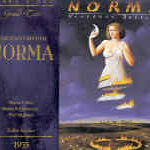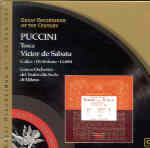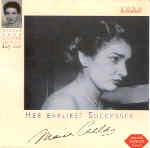

This recording, made in 1959, finds Maria Callas in dire vocal condition, with the wobble in prominence, the voice in three distinct parts with some

Fiorilla was one of two comic roles in Maria Callas’ repertoire, the other being Rossini’s Rosina. Il Turco is a strange work, witty and wry

Recorded in 1953 and 1954 respectively, these recordings of Cav and Pag remain the most compelling on discs, despite boxy, occasionally distorted sound. Maria Callas

This was Maria Callas’ first studio-recorded Norma, and it remains a formidable performance. If it doesn’t quite have the emotional shadings of her 1960 EMI

Once we get the obvious out of the way–that from 1950 to 1964 (and arguably both before and since) Maria Callas was the greatest Norma

Yes, it’s the Callas Tosca yet again, this time reissued in EMI’s Great Recordings of the Century series, and it’s still the one version that

This performance, from Mexico City in July, 1951–in terrible sound, even for its time–shows Maria Callas a finer Aida than in her commercial recording, and

This recording finds Callas at her most vocally secure and powerful, absolutely fearless throughout her entire range, with coloratura spotless and, as usual, her attention

This collection meets Maria Callas in 1949, when she was as much daredevil as soprano, with a fearlessness and indeed recklessness that is astonishing. The

Maria Callas sang many times in Mexico early in her international career, normally in under-rehearsed productions, mostly with dreadful conductors (Umberto Mugnai, Guido Picco), and
![]()
